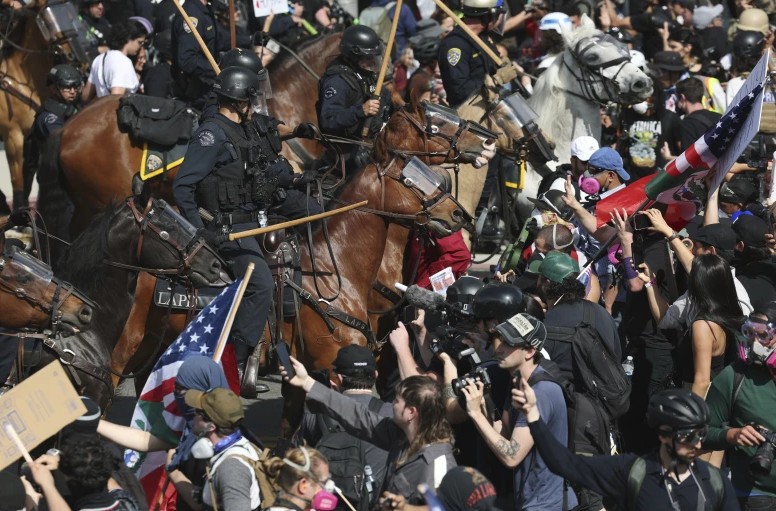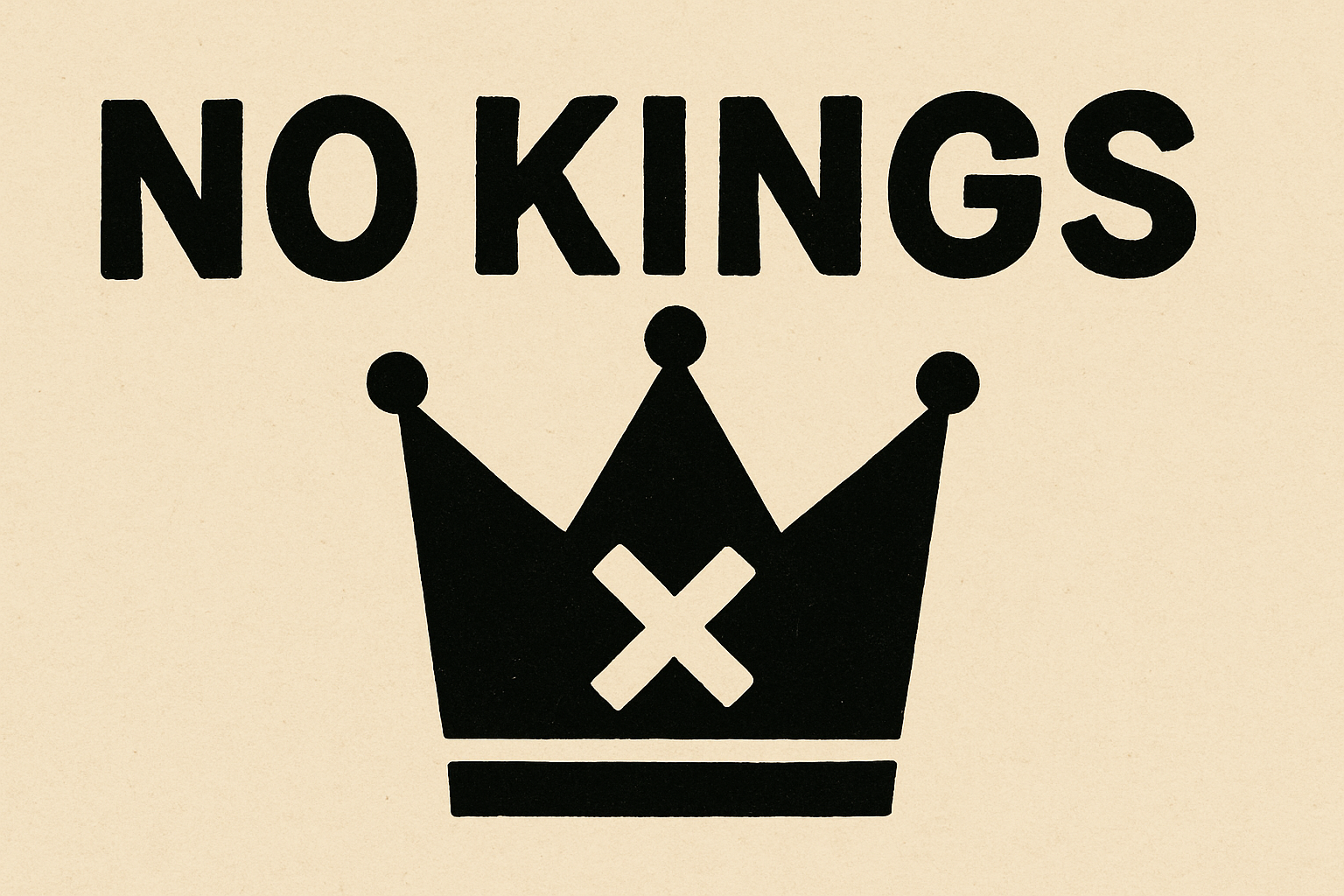The “No Kings” movement has erupted across the United States in what many are calling the most coordinated national protest since the Women’s March.
On June 14, millions of Americans in all 50 states took to the streets under a shared slogan– “No thrones, no crowns, no kings—just democracy.” While seemingly sparked by President Donald Trump’s military parade in Washington D.C., the deeper roots of the movement run through years of growing discontent over executive overreach, the militarisation of politics, and erosion of democratic norms.
What began as frustration over the cost and symbolism of the parade, seen by critics as a self-aggrandising spectacle involving tanks and warplanes, quickly coalesced into a broader campaign to defend the principles of civilian governance and institutional checks.
The organisers, a loosely knit but digitally savvy coalition called the 50501 Movement (referring to 50 states, 50 protests, 1 movement), have declared their aim as not overthrow but restraint: to remind Americans that no leader is above the people. There are no clear leaders, and that is by design. The movement relies on volunteer-led networks, toolkits, and coordination between existing civil society organisations like the ACLU, Indivisible, and SEIU. Even wealthy figures like Christy Walton reportedly placed national newspaper ads calling for protest participation.
In the streets of New York, actor and activist Mark Ruffalo captured the emotional intensity of the moment: “No one’s gonna come and save us… we are the Avengers of democracy.”
In Bridgeport, Connecticut, Maxine Greenberg, a teacher and lifelong independent voter, explained her presence simply: “People are fed up, and there’s nothing else we can do except show up this way.” Nearby, Vietnam veteran John Hennessey added, “I just don’t like oligarchs and kings and dictators. It’s all of our responsibility to stand up when power goes unchecked.”
The turnout was staggering.
Over 2,000 protest events were registered, drawing crowds from a few hundred to tens of thousands. New York City saw over 50,000 in Union Square and along 5th Avenue. Los Angeles, Houston, Philadelphia, and Salt Lake City reported large gatherings– some festive, others tense. In Salt Lake, one protest turned violent when a counterprotester opened fire. In L.A., police deployed tear gas after a tense standoff near Wilshire. But the vast majority of events remained peaceful, even jubilant.
The Trump administration offered little direct response beyond labelling the protests as “overblown liberal theatre.”

Trump himself defended the parade as “a show of strength to honour our great troops.” His press secretary claimed the protests were being “coordinated by coastal elites who don’t represent real America.”
Meanwhile, in Republican-led states, governors deployed national guard units and state police preemptively, citing safety and “potential unrest.”
Democratic politicians took a far different tone.
Senator Richard Blumenthal called the protests “a reaffirmation of what America still believes in.” In Houston, local representatives Sylvia Garcia and Al Green joined marchers directly.
Not all Republicans, however, were dismissive: South Carolina Governor Henry McMaster acknowledged the events were “well-organised and largely peaceful,” and Utah Senate President Stuart Adams urged critics to “respect the people’s right to assemble, even when we disagree.”
Comparisons to the Arab Spring have emerged in global commentary, though such parallels are imperfect. Unlike the revolutionary fervour of Cairo’s Tahrir Square, “No Kings” does not seek regime collapse, but reform within. Its focus is to reinforce, not replace, American democracy. However, the breadth of participation, the emotional stakes, and the symbolism of resistance to power do echo something revolutionary.
What happens next is uncertain.
The organisers promise this is only the beginning. “We’re not waiting until November,” reads a pinned post on the 50501 site. “Every day, every city, we remind the government: America is not a monarchy.”
Whether the movement sustains momentum beyond the initial surge– or fades like Occupy and Black Lives Matter’s early waves– depends on what follows: policy changes, electoral shifts, or a rebalancing of power.
But one thing is clear. In the middle of summer, amidst parades and protests, America is once again debating what kind of republic it wishes to be– and who gets to sit at the centre of it.


